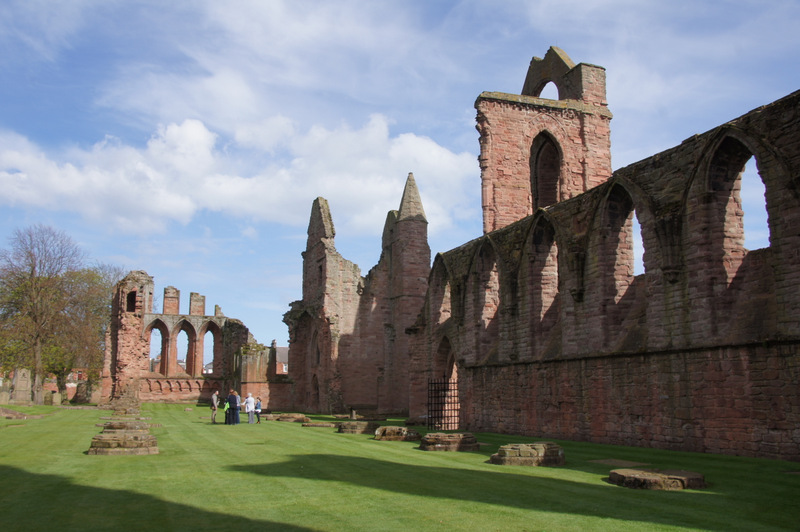INS Researchers Highlight Research at the Exciting SSNS 2025 Conference!
Staff and students from the University of the Highlands and Islands Institute for Northern Studies gathered at the Scottish Society for Northern Studies Day Conference in Arbroath on 22nd November 2025.
The conference showcased fascinating insights into Scotland’s Viking and Early Medieval period, with Professor Alex Sanmark inspiring attendees with the Hermann Pálsson Memorial Lecture on Sea Travel and Communication Routes in Scandinavian Scotland. PhD candidate Peter Randall also captivated the audience with his intriguing research, Norse Law on the Go: Temporary Places of Assembly in the Contemporary Kings – both papers providing an excellent opportunity for learning and discussion. The presence of the UHI Institute for Northern Studies was further supported by MRes student Dan McLean and PhD candidates Shanna Bryman, Amanda Robinson, and Matthew Farren, who also attended.
Professor Sanmark’s paper examined the relationship between land and sea in Scandinavian Scotland. While much research on Norse communication using boats has focused primarily on sea voyages, there has been little attention given to travel along the major rivers except in the east. This paper addressed two underexplored aspects: the identification and use of portages and travel along smaller inland waterways. Increasing evidence suggests that portages and inland waterways were regularly utilised in Scandinavian Scotland, as indicated by sagas, place names, topography, and archaeological fieldwork.
The results of new fieldwork conducted in Orkney, as part of the project Connectivity and Communication in Norse Orkney, were presented. This research with the University of St Andrews builds upon a water route identified in 2020 and offers further insights into inland travel by boat and the broader Orkney landscape of the past. Additionally, a survey of water routes and portages across Scandinavian Scotland was analysed. Some of these routes span across entire islands, while others are shorter.
By recognising the various modes of travel, we can suggest that islands were not merely perceived as isolated land masses that could only be traversed on foot or horseback. Instead, land and sea should be viewed as two interconnected elements, with water routes offering access from the sea to inland settlements and other significant sites. Consequently, Professor Sanmark argues that traditional maps, which typically separate land from sea, need to be reassessed.
Alexandra Sanmark is Professor of Medieval Archaeology at the UHI Institute for Northern Studies. She has recently led a number of research projects focusing on travel and communication in Scandinavia and the North Atlantic, such as AHRC/DFG-funded The Norse and the Sea which focuses on Viking Age settlement and maritime connections in Scotland and Royal Society funded Communications in Norse Orkney.
In addition, Professor Sanmark is researching royal inauguration sites and rituals as well as medieval sites of execution. Another research interest is women and gender in the Viking Age. Recent publications include Norse Navigation in the Northern Isles in the Journal of the North Atlantic, co-written with Shane McLeod and the co-edited volume The Hidden Lives of Viking Women (Oxbow).
UHI Institute for Northern Studies PhD candidate Peter Randall began the afternoon discussion by presenting his paper, which examined places of assembly in a collection of Old Norse-Icelandic sagas known as the contemporary kings’ sagas. The paper built on his research project which has so far covered 127 assemblies held within the Norwegian realm between c.1180 and c.1280. The focus of his paper was on ‘temporary sites of assembly’ in Sverris saga, Bǫglunga sǫgur, and Hákonar saga Hákonarsonar.
Peter’s paper examined how king’s following, including the royal retinue (Old Norse: hirð) and the military troop (Old Norse: lið) made use of the landscape in Scandinavia and Scotland for holding assemblies during military campaigns and royal progresses. Peter emphasised similarities between the procedure carried out at these assemblies in the sagas with stipulations on assembly in Norse law. Peter also noted similarities between the places used and regular sites of public assemblies, while maintaining that it was not necessary for these temporary places of assembly to be held at established assembly sites.
Peter is a PhD student with the UHI Institute for Northern Studies. He is currently writing his doctoral thesis on places of assembly in the contemporary kings’ sagas using a combination of text-based research, toponymy and landscape archaeology. In addition to working on this research, Peter is currently the secretary for the Scottish Society for Northern Studies.
